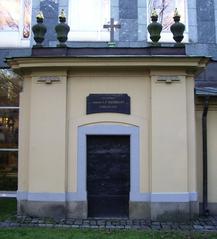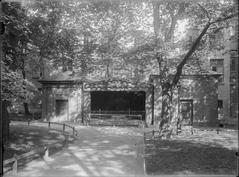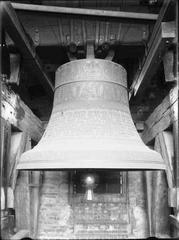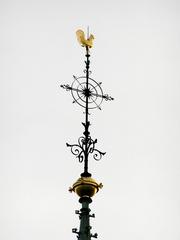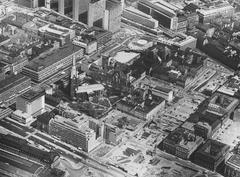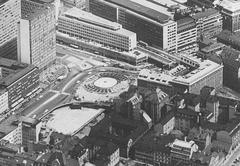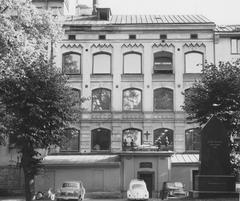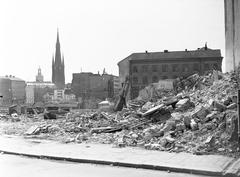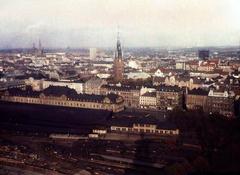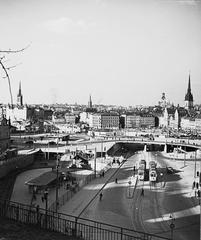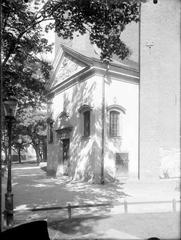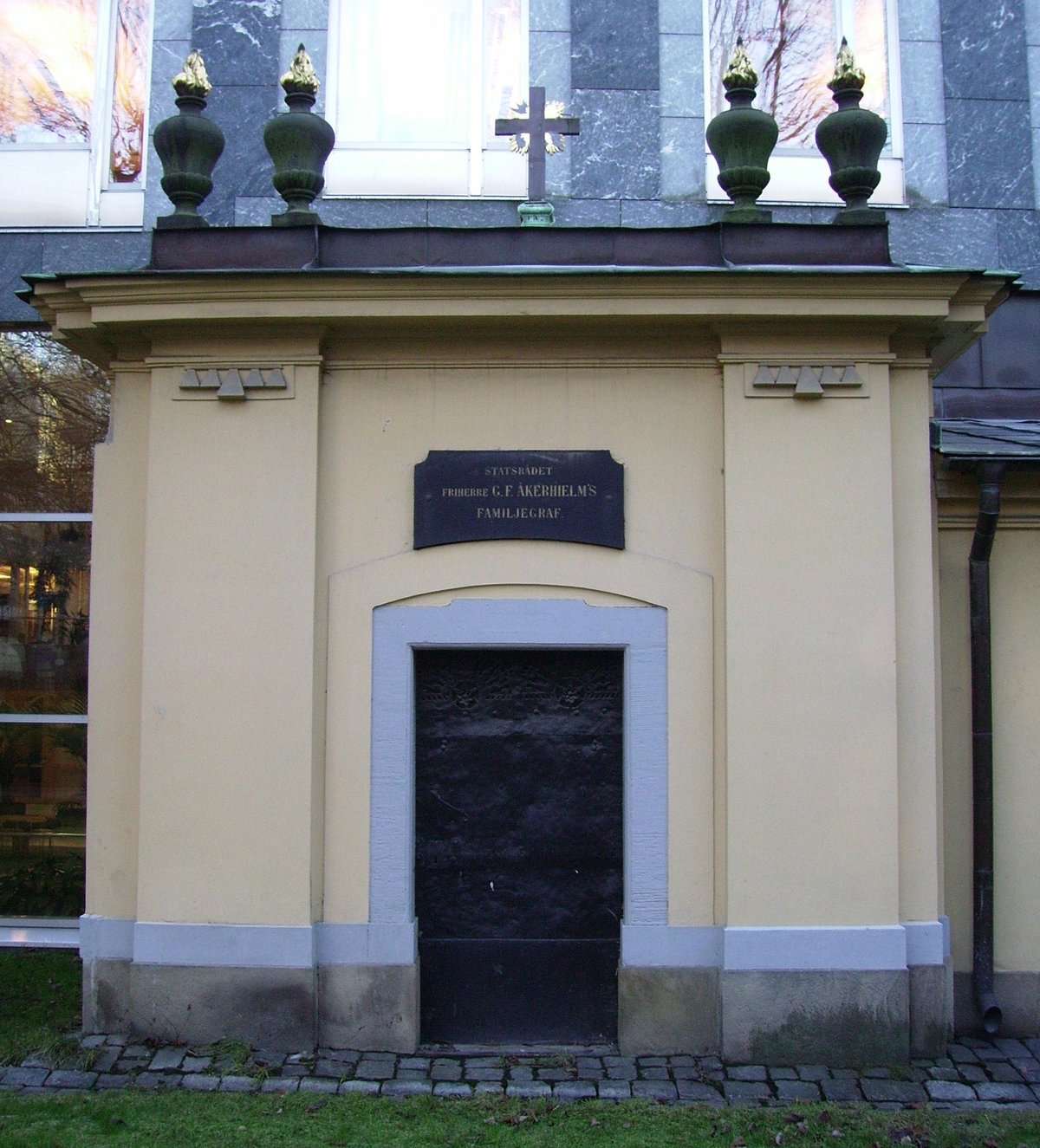
Klara Church Visiting Hours, Tickets, and Historical Significance in Stockholm
Date: 14/06/2025
Introduction
Klara Church (Klara kyrka), nestled in the heart of Stockholm’s Norrmalm district, stands as a monumental symbol of the city’s religious, architectural, and social evolution. With origins dating back to the late 13th century, Klara Church embodies a remarkable blend of Gothic, Renaissance, Baroque, and Neo-Gothic styles, reflecting centuries of transformation in Sweden’s capital. Its towering 116-meter spire defines Stockholm’s skyline, while the church itself remains an active sanctuary for worship, music, culture, and social outreach.
Whether you are a history enthusiast, architecture admirer, or traveler seeking a tranquil space amidst urban life, Klara Church offers a unique and memorable experience. Visitors can explore its storied past, admire its artistic treasures, and participate in community events—all with convenient access from Stockholm Central Station and proximity to other major city attractions.
For current visitor information, including up-to-date opening hours, ticket policies, and event schedules, consult resources such as The Newbie Guide, Stockholm Museum, and Visit Stockholm.
Table of Contents
- Origins and Medieval Foundations
- Renaissance Construction and Early Architecture
- The 18th Century Fire and Restoration
- Tower, Spire, and Artistic Enhancements
- Modern Role and Social Outreach
- Visiting Information: Hours, Tickets, Accessibility
- Architectural and Artistic Highlights
- Nearby Attractions
- Frequently Asked Questions (FAQ)
- Conclusion
- Sources & Further Reading
Origins and Medieval Foundations
Klara Church traces its roots to the Convent of St. Klara, established in the 1280s and dedicated to Saint Clare of Assisi. The convent became a pivotal religious institution in medieval Stockholm, fostering spiritual life, education, and charitable work (The Newbie Guide).
The Protestant Reformation of the early 16th century, spearheaded by King Gustav Vasa, led to the dissolution of Catholic institutions across Sweden. In 1527, the St. Klara convent was demolished, and the site remained vacant for several decades (The Newbie Guide).
Renaissance Construction and Early Architecture
In the late 16th century, King Johan III ordered the construction of a new church on the former convent site. Built between the 1570s and 1590s, Klara Church emerged as one of central Stockholm’s oldest surviving churches. It showcased Renaissance design principles—balanced proportions, understated ornamentation, and a sense of grandeur—marking Stockholm’s transformation into a burgeoning capital (The Newbie Guide, Alamy).
The 18th Century Fire and Restoration
A catastrophic fire in 1751 severely damaged the church. Restoration was led by distinguished architects Carl Hårleman and Carl Fredrik Adelcrantz, who incorporated Baroque elements and enhanced the church’s artistic features. The renowned sculptor Johan Tobias Sergel contributed angelic figures still seen in the chancel today (The Newbie Guide).
Tower, Spire, and Artistic Enhancements
In 1880, Klara Church’s soaring 116-meter spire—now the tallest church tower in Stockholm—was completed, dramatically reshaping the city’s skyline. The late 19th-century renovations also included vibrant vault paintings by Olle Hjortzberg, merging Renaissance, Baroque, and early modern Swedish art styles (The Newbie Guide).
The church’s exterior features durable red brick with stone accents, pointed-arch windows, and flying buttresses. Inside, the basilica layout is highlighted by ribbed vaults, slender columns, and vivid stained glass depicting biblical scenes.
Modern Role and Social Outreach
Despite significant urban redevelopment in the 20th century, Klara Church was preserved due to strong community advocacy (Stockholm Museum). Today, it remains a beacon of spirituality, culture, and social responsibility. The church is renowned for its outreach programs, providing meals, shelter, and counseling for Stockholm’s vulnerable populations, in line with the Swedish Lutheran diakoni tradition (Alamy).
Klara Church also serves as a venue for concerts, lectures, and community gatherings, fostering inclusivity and cultural enrichment.
Visiting Information: Hours, Tickets, and Accessibility
Visiting Hours:
- Typically open Monday–Saturday: 9:00 AM–5:00 PM
- Sundays: 12:00 PM–5:00 PM
(Hours may vary on holidays and for special events—always check the official website before your visit.)
Tickets:
- General admission is free.
- Donations are welcome to support community initiatives and maintenance.
- Some guided tours or special events may require advance booking or tickets.
Accessibility:
- Wheelchair accessible with ramps and accessible restrooms.
- Assistance available upon request.
Guided Tours:
- Available in multiple languages.
- Book in advance via the official website or local tourism offices for in-depth exploration.
Travel Tips:
- Located near Stockholm Central Station and major bus/tram lines.
- Walking distance from many central attractions.
- Public transit is recommended due to limited parking.
Architectural and Artistic Highlights
- Tower and Spire: 116 meters tall, the highest in Stockholm, topped with a gilded cockerel symbolizing vigilance.
- Interior: Ribbed vaults, stained glass windows from the 19th century, ornate altar, carved wooden pews, and a grand organ.
- Artistic Contributions:
- Carl Hårleman: Intricate pulpit design
- Carl Fredrik Adelcrantz: Baroque restoration
- Johan Tobias Sergel: Angelic sculptures
- Olle Hjortzberg: Vault paintings
Nearby Attractions
Enhance your visit with these nearby destinations:
- Sergels Torg: Stockholm’s central square with the iconic glass obelisk.
- Royal Swedish Opera: Premier cultural venue for music and performance.
- Drottninggatan: Bustling pedestrian shopping street.
- Kungsträdgården: Historic park and event space.
- Dansmuseet: Museum of dance and performance arts.
Frequently Asked Questions (FAQ)
Q: What are Klara Church’s visiting hours?
A: Generally, 9:00 AM–5:00 PM Monday to Saturday, and 12:00 PM–5:00 PM on Sundays. Check the official website for current schedules.
Q: Is there an admission fee?
A: No, entry is free. Donations are appreciated.
Q: Are guided tours available?
A: Yes, in several languages—book ahead for best availability.
Q: Is the church wheelchair accessible?
A: Yes, with accessible facilities and assistance available.
Q: Can I take photos inside?
A: Photography is generally allowed; please be respectful during services.
Conclusion
Klara Church stands as an enduring testament to Stockholm’s layered history, architectural splendor, and commitment to social compassion. From its medieval convent origins to its vibrant present-day role, the church invites visitors to engage with Sweden’s past and present in a setting that blends tranquility, artistry, and community. Whether you are seeking a peaceful refuge, a landmark of Gothic Revival architecture, or a hub of social outreach and cultural events, Klara Church welcomes all.
Plan your visit by checking the latest information on the official website, and consider using the Audiala app for guided audio tours and event updates. Explore more of Stockholm’s historical sites to fully experience the city’s unique allure.
Sources & Further Reading
- The Newbie Guide – Visiting Churches in Stockholm
- Stromma Guide to Stockholm Churches
- Nomad Epicureans – Stockholm Walking Tour
- Stockholm Museum – Klara Church
- Stockholm Museum – Norrmalm Area
- Visit Stockholm – Travel Tips
- Alamy – Klara Church Images
- Trek.Zone – Klara Church
